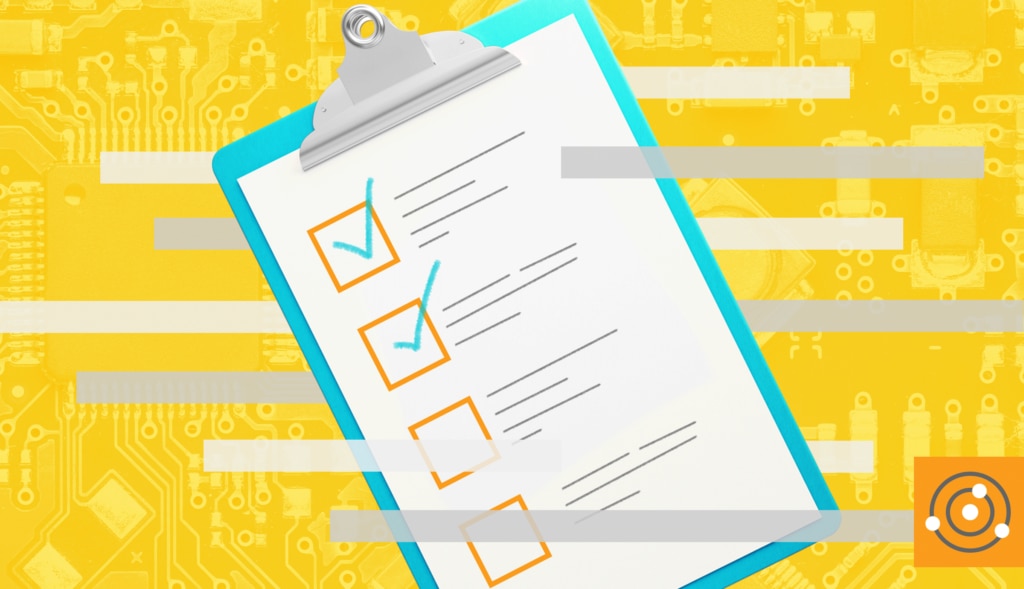IT asset management (ITAM) is a hot topic of 2020. Like almost everything else, managing lifecycle costs and minimizing risks has been a bit more complicated in recent months given the sudden shift to
remote work and assets leaving the traditional workplace. It begs the question: are you maximizing the value from your current ITAM strategy?
Let’s dive into this handy
checklist of questions to help you answer the question above. We’ll also share tips for how to make the most of your strategy from our ITIL® 4 certified experts.
What do you have?
The first thing you should do to establish a successful ITAM strategy? Figure out what and how many assets are in your inventory. Consider these types of assets:
- Laptops and desktops
- Mobile devices
- Hardware
- Servers
- Routers
- Switches
- Virtual machines
Comprehensive IT asset management is difficult to accomplish manually. Imagine tracking all of these assets in spreadsheets or on sticky notes. It’s much easier
and more effective to automate discovery and updates for these asset types.
This leads to the next challenge: getting all of that data in one location. One of the best ways to make this happen is through a
discovery tool. Whether by agent or by scanning the network, the tool allows you to collect details of assets automatically throughout their lifecycle in the business.
Where is it? What’s on it?
The next item on your checklist is figuring out where all of your IT assets live. This question applies to the physical location of the asset
and where they’re being tracked. Especially when employees are working outside the confines of the office, it’s imperative to know where the devices are located. A discovery tool can keep them safe from theft or misplacement.
“Even if you’re tracking assets on paper, that’s asset management,” said
Sean Sebring,
ITIL 4 Managing Professional. “But having a well-defined asset management practice is what matures your strategy.”
The information on these assets has security implications. As we’ve noted before,
shadow IT is a common act performed by employees—instead of relying on IT to fix issues or get permission to download programs, employees take matters into their own hands. To ensure illegal downloads, viruses, and other risks stay at bay, IT departments play a big role in maintaining the security of assets.
Who does it belong to?
A record of who owned what asset is key for IT asset management. For repetitive issues in particular, a historical record in the ITAM system can help IT teams know who to contact if they persist and all the details about their device.
“It’s not enough to know how many devices you have in your environment,” said SolarWinds Solutions Engineer
Jason Yeary. “You should know who owns what so that when requests are coming in, you can correlate the asset and the owner.”
Onboarding and offboarding are common examples where ITAM can be used to streamline the processes. Knowing what’s available for the employee to use when they first join can be helpful in choosing the most appropriate devices for their work. For offboarding, the beginning record of what was provided to the employee can be referenced when retrieving their devices.
“Having these steps automated as part of your service management process is going to be a huge cost-saver, especially in the offboarding process,” said Sebring.
“Employees aren’t just leaving their laptop on a desk if they’re exiting the company, because chances are they’ve been working remotely,” said Yeary. “There needs to be a process in which you’re collecting the device back. If not, you’ll lose money and face a potential security issue.”
How many times has it been worked on?
This question can help determine if an asset needs to be replaced, if a piece of software should be reconsidered, or whether additional training is needed. Depending on the condition and history of the asset, IT can decide if it’s worth keeping it or not.
“If you’ve had a single device with three reports across five different owners, at what point do you look at that asset and say it’s time to replace it?” asked Sebring. “Without the incident history, you may be repeating or exacerbating problems on devices because you didn’t know the service had been done.”
Beyond having a simple list of inventory, an
ITAM solution gives you visibility into how the asset is or isn’t contributing to the goals of the business. It creates context around common incidents and root issues. And one of the key benefits of all that visibility? Reducing the number of tickets that land in the service desk queue.
Is it under warranty?
“One of the ITIL principles that I like to lean on for this one is ‘
Start Where You Are’ — and with what you have,” said Sebring. “If you’ve got warranties on your assets, leverage them. If it isn’t easily accessible to identify that information, you may be spending extra money to repair or replace devices that are
under warranty.”
An integrated ITAM and
IT service management solution can be invaluable for tracking warranties. Know if a warranty exists, when it expires, and if/when it can be renewed. If incidents persist, you’ll want to know if it’s covered by the vendor before spending extra money getting something new.
How is it related to other assets?
The next (but not last) step in your IT maturity: building a
configuration management database (CMDB) and relating assets together.
“This plays into incident management, problem management, change management, and all those additional levels that you may go through,” Yeary said. “Having that information is going to give you more context when troubleshooting a device and seeing what else it relates to. This is next level maturity for an organization’s asset management processes.”
A CMDB takes ITAM further—it gives a visual representation of the upstream and downstream relationships of assets and gives insight to the root cause of persistent issues. ITAM is the “what,” but CMDB is the “how.”




